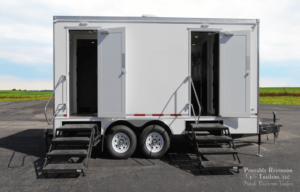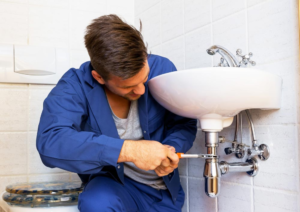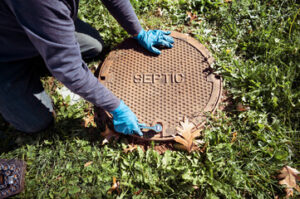HVAC technicians do more than just make homes comfortable. Their work contributes to positive environmental change, day in and out.

The modern HVAC system is comprised of many different parts. Air moves into the system, where it is filtered, brought up to temperature and any excess humidity is removed. It then travels throughout the home via a network of ducts.
Heat pumps, powered by low-emissions electricity, are the central technology in the global transition to secure and sustainable heating. They are 3-5 times more energy-efficient than electric resistance heaters, and can be used in a range of domestic applications as well as larger-scale district heating networks.
To get a sense of how they work, think about water flowing naturally in nature. The same principle applies to heat – it naturally flows from a warmer place to a colder one, and vice versa. Heat pumps simply move this thermal energy between indoor and outdoor environments.
The most common type of heat pump is the air-source variety. It takes the heat energy from outside your home by moving refrigerant through a series of coils (not too dissimilar to what you see on a refrigerator) in a duct system inside your house. This process happens both when the heat pump is running in cooling mode, and when it’s heating up your home.
As the heat pump moves the refrigerant in and out of its heat exchangers, it’s doing a lot of work. This is reflected in its coefficient of performance (COP), which is an expression of how many units of output energy it produces for each unit of electrical input.
On a chilly winter day, you walk over to your thermostat and bump the temperature up a bit. The system kicks into heating mode, the fan and compressor speed up, and the refrigerant starts moving faster to transfer more thermal energy from the ground or a nearby river into your home.
Once the conditioned air has been moved around your home, the fan slows down, and the refrigerant in its coils goes back into a liquid state. As it does so, it passes through an expansion valve. Just like squeezing a balloon makes it warm, expanding it cools it off and turns it back into a gas. It then leaves your home through a vent or a hose connected to the outdoor unit.
Heat pumps use less expensive fuels than other types of systems, but they do require maintenance and repair. It’s important to know what to look out for because some of the components in a heat pump can be hazardous if handled improperly. This is especially true of the condenser motor, which if it malfunctions can cause the refrigerant to not liquefy at all. A professional will need to take a closer look at this part of the unit to determine what the issue is.
Furnaces
Furnaces use combusting fuel to heat air and distribute it throughout the home. They have many components including a blower, combustion chamber, flue vent connector, and air ducts that transport heated air to rooms throughout the home.
They also have an igniter and gas valve to control the flow of fossil fuel into the furnace. The igniter uses a controlled flame to ignite the fuel. It is powered by electricity from the control board, which sends it an increasing amount of voltage until it reaches its sparking point and creates a flame. Unlike wood and coal furnaces, which had no electronic controls, modern gas and oil-powered furnaces are regulated by a thermostat inside the home.
The thermostat sends a signal to the control board that the building needs heat, which turns on the gas valve and igniter. The cool air in the ductwork enters the combustion chamber, where the heat exchanger warms it before it’s blown into the supply ducts. A blower fan then forces the warmed air into return ducts that carry it back to the furnace for re-heating.
Alternatively, some furnaces use propane or oil to generate the heat energy. These are cheaper to operate and work well for homes that don’t have access to natural gas. They are often more expensive to install, however, and they are not as efficient as the majority of gas-powered furnaces.
The most common type of furnace in the United States is powered by natural gas, which can be obtained from a pipeline or liquid propane gas storage tank. It’s important to note that the combustion process for this type of furnace emits carbon monoxide into the air. This is dangerous and can lead to illness or even death if it is not properly vented. A vent pipe connects the furnace to a chimney or other exhaust system that carries carbon dioxide out of the house. The vent pipe should be inspected periodically for cracks or breaks. A professional should repair or replace the pipe as needed.
Ventilation
Ventilation is one of the most important components of an HVAC system. It allows for fresh air to be brought into a building or room, and then either heated, cooled, or filtered to remove pollutants and excess humidity. The system then sends the fresh, conditioned air to the areas that need it.
Ventilating a space can be done naturally or mechanically. In natural ventilation, outdoor air is brought into the building through air inlets, and then distributed throughout the spaces using ducts and diffusers. This type of ventilation is usually used in smaller buildings or rooms, or for specific tasks like supplying fresh air to laboratory fume hoods (Etheridge and Sandberg 1996).
Mechanical ventilation systems can be divided into several categories. Energy recovery ventilation systems recycle the energy used by air conditioners to provide heating and cooling, and can also help reduce indoor carbon dioxide levels and moisture. Chilled water systems use a series of coils to cool the air before distributing it, and are suitable for larger buildings with substantial cooling requirements. Dedicated outdoor air systems distribute fresh, conditioned air to specific zones in the building, and are ideal for large commercial buildings with complex ventilation requirements.
Another type of mechanical ventilation system uses heat exchangers to transfer the heat from hot water or steam into air, and then distributes it through a network of ducts in the building. This is a more efficient way to heat and ventilate large buildings, and can also be more cost effective than traditional steam/hot water heating.
The final part of an HVAC system is the air filter, which keeps impurities from getting into the rest of the system. A clean filter will allow your HVAC system to work more efficiently, and will prevent the buildup of dust inside your ducts, which can lead to a number of problems, including poor airflow, high energy usage, and reduced comfort. When choosing an air filter, look for a MERV rating. MERV stands for Minimum Efficiency Reporting Value, and it measures how well the filter removes particles from the air. A higher MERV rating means the filter removes more particles from the air.
Filters
The HVAC filter is designed to keep contaminants out of the blower fan and other components. A clean filter is essential to optimize HVAC performance, reduce strain, lower energy costs, and improve indoor air quality. Changing filters monthly or as needed is a small cost that prevents much larger duct cleaning, HVAC repair, and replacement expenses. Choosing the correct filter type and size for your system is important, as well as following a consistent change schedule to ensure optimal efficiency.
Filters are available in a variety of materials and thicknesses, and each has a different effect on system efficiency and performance. Fiberglass filters, for example, are inexpensive and disposable. They are made of layered fiberglass and are designed to trap larger particles. They do not, however, catch smaller contaminants like pet dander or pollen. These types of filters are best used for general purpose applications, such as homes and offices with mild allergies or respiratory issues.
Pleated filters have a higher surface area and trap a wider range of pollutants than fiberglass filters. They are also generally more durable, and they can be washed and reused. They can be purchased in many sizes and thicknesses, from 1″ thick to 12″ thick. Thicker filters are generally more restrictive to air flow and are better suited for high-risk environments, such as hospitals or labs.
Electrostatic filters have a series of metal plates or grids that are charged with electricity. When air flows through the filter, it picks up electrical charges from the dust and other particles. These particles are then captured on the surface of the filter, and they can be washed and re-used.
The most important factor when choosing a filter is to determine its MERV rating. A higher MERV rating indicates a more efficient filter that is capable of capturing a wider range of contaminants. However, it is also important to keep in mind that a higher MERV rating will restrict the amount of air that can pass through the filter, which can put additional strain on your system.








